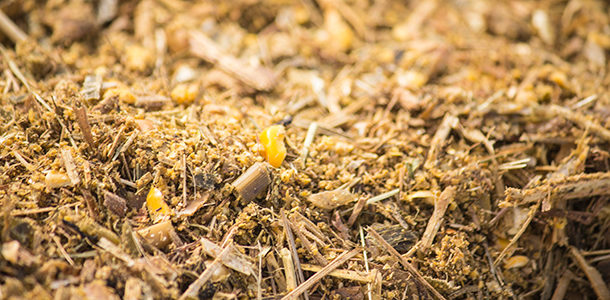As with any seed selection, probably nothing is more important than selecting a hybrid that is well adapted to your area. If it won’t grow well in your region, none of its other attributes will be of much value.
In general, silage hybrids should be a little later in maturity than grain hybrids to obtain maximum yields. Certainly, individual situations may alter this general recommendation. For instance, maybe silage fields are planted after grain fields, effectively shortening their growing season. Or maybe the silage harvest season tends to last several weeks, suggesting use of multiple maturities to present well-timed, staggered maturity and harvest dates.
Before exploring other characteristics of silage hybrids, it may be wise to determine what type of animal will be fed the silage and what you need to get from that silage. With dry dairy or beef cows the most important selection criteria may be simple tonnage. High grain or energy yield might actually be undesirable as it could cause too much weight gain by this class of animal. Of course, if you have lots of mature grass hay, straw or corn stalks to feed with high-energy silage, a well-balanced ration might be easily prepared. Use of leafy-type hybrids also might fit some of these situations.
For most silages, though, grain yield is still very important. The best silage types will have high grain yields not only for tonnage, but also because grain is highly digestible. Total tonnage as silage, though, also must be considered because there can be significant differences in total plant yield as silage within high grain-yielding hybrids. So use data that provides silage yield as well as grain yield comparisons when identifying hybrids for potential silage plantings.
Historically, it was thought that high grain hybrids would nearly always produce the best silage. It has become clear in recent years that the feeding value of silage made from hybrids with nearly identical high grain yields can be very different. Grain characteristics, fodder components and animal type being fed all play a role in determining which hybrid will provide the best feeding outcomes.
Some kernel characteristics that are desirable for grain harvest may be less desirable for silage production. Fast dry down can narrow the harvest window for optimum silage moisture content. Hard textured kernels may need additional processing to prevent excessive passage into the manure.
When evaluating grain characteristics like rate and extent of starch digestibility for best silage quality, consider the animal type and other ration components. High starch hybrids may be excellent for lactating dairy cows that are also fed other high-quality forage or in beef finishing rations. However, when corn silage provides all the forage or roughage in the dairy diet, high starch or floury hybrids may not be as suitable.
Some of the biggest differences among hybrids may be in fodder components like digestibility, neutral detergent fiber (NDF) and NDF digestibility. Total NDF and NDF digestibility can affect feed intake and, as a result, milk production or rates of live-weight gain.
Fiber differences can come from several traits. Conventional high grain-yield hybrids vary in their NDF content and fiber digestibility although the range from best to worst is not nearly as great as their differences in grain or silage yield. Corn breeders have taken advantage of various genetic traits to also reduce fiber concentration and increase fiber digestibility. One trait comes from the BMR or brown midrib gene. Hybrids with the BMR gene produce less lignin than conventional hybrids. This increases the digestibility of the fiber and improves intake by the animal.
Early BMR hybrids produced lower yields than conventional hybrids and often would lodge severely. Recently released BMR hybrids, though, have improved greatly. Problems with lodging have been reduced, but not eliminated. The average yield of BMR hybrids still is less than that of conventional hybrids, but the range in yields among BMR hybrids is large. The best BMR hybrids yield nearly as much silage as the best conventional hybrids.
Obviously, there are many traits and factors to consider when choosing corn silage hybrids: adaptability, maturity, standability, tonnage, animal type, leafy, kernel texture, starch content and digestibility, BMR, fiber content and digestibility. Determine what is best for your operation. Then use actual comparative trial data from universities or other reliable sources as well as seed company ratings to select hybrids that should work best for you and your livestock. FG
Bruce Anderson is an extension forage specialist with the University of Nebraska – Lincoln.
PHOTO
Photo by Progressive Forage Grower Editor Lynn Jaynes.










